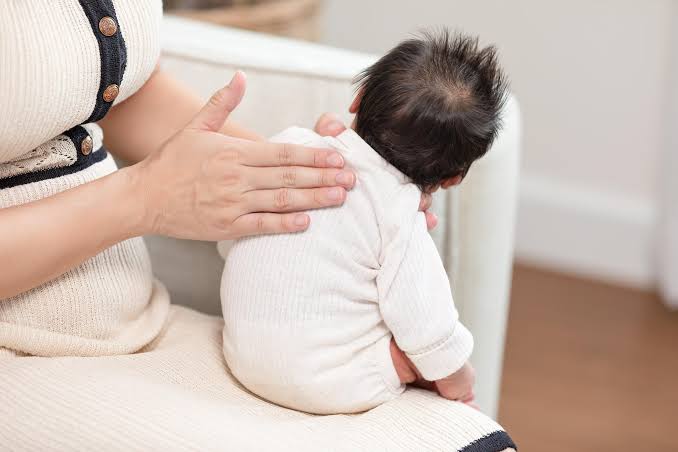You have just finished feeding your baby. The burp went well. The calm settles over the room. Then those tiny hiccups begin. One at first then another and another. That sudden rhythm can make a peaceful moment feel oddly urgent. Is this normal Is there something I did wrong Should I wake the doctor The answer you want is simple and calming. Hiccups after feeding are incredibly common in infants and almost always harmless. But knowing why they happen, what patterns to watch for, and which small adjustments really help will change panic into quiet confidence. Here is the real science and the most useful tips parents actually use every day.
First let us start with what hiccups are. A hiccup is an involuntary contraction of the diaphragm the sheet of muscle that separates the chest from the abdomen and drives breathing. When the diaphragm contracts suddenly the vocal cords snap shut for a moment producing the classic hic sound. In babies this reflex is not a sign of danger. It is part mechanical and part developmental. Babies begin hiccuping in the womb which suggests the reflex plays a role in early respiratory and neural development. That means for many infants hiccups are simply one more routine of learning how to breathe and coordinate feeding.
So why do hiccups often come right after a feed The most frequent cause is swallowed air. When babies gulp quickly or when a bottle nipple is too fast they take in air along with milk. That air moves into the stomach and can press upward against the diaphragm causing it to spasm. Breastfeeding infants can also swallow air if the latch is shallow or the baby pulls off and relatches. Overfilling the stomach is another common trigger. Tiny baby stomachs have low capacity and when they are stretched a bit too much the diaphragm reacts. Sudden changes in temperature and even excitement or crying immediately after feeding sometimes provoke hiccups as well.
Beyond swallowed air and stomach fullness there are several real world patterns parents and pediatricians notice. Babies who feed very quickly often hiccup several times per day. Bottle fed infants whose nipple flow is too rapid are especially likely to gulp and hiccup. Babies with a very strong letdown during breastfeeding may also swallow extra air as they try to coordinate breathing and swallowing. Some babies hiccup more when they are overtired or gassy. For most families hiccups come in brief waves and resolve without intervention.
Are baby hiccups ever a red flag There are a small number of situations where hiccups merit a clinical check. If hiccups are constant for many hours if they appear to make the baby uncomfortable or distressed if they are accompanied by repeated vomiting poor weight gain coughing or difficulty breathing then it is prudent to contact a pediatrician. These signs can point to conditions that need attention such as gastroesophageal reflux or respiratory infection. But remember these cases are the exception not the rule. The overwhelming majority of hiccups after eating are benign.
Knowing what to do is what matters most to parents. Start with burping. Frequent burping during and after feeds helps release trapped air and reduces pressure on the diaphragm. Instead of waiting until the end pause mid feed and burp your baby. A common technique is the over the shoulder cradle with gentle pats on the back or sitting the baby upright on your lap supporting the chin and chest while patting the back. Another practical change is to slow the pace of feeding. For bottle feeding try a slower flow nipple that limits how fast milk and air enter the mouth. For breastfeeding check the latch and consider switching positions to improve suction and reduce air intake.
Holding your baby upright for a short period after feeding can make a big difference. Gravity helps the milk settle and prevents the stomach from pressing directly against the diaphragm. Even a five to ten minute upright window can reduce how often hiccups begin. Smaller more frequent feeds also reduce the chance of overfilling the stomach. If your baby tends to gulp and hiccup after large feeds try splitting the feeding into two shorter sessions spaced closely together.
Avoid home remedies that are unsafe. Do not startle or scare a baby to stop hiccups. Do not force water in the early months unless a pediatrician recommends it. Simple gentle measures work far better than dramatic tricks. Often a brief pause as you burp and reposition your baby is enough. Most hiccups simply run their course and vanish within minutes.
There are also things to watch for that can prevent repeated episodes. Check bottle design and nipple flow. Some bottles are designed to minimize air ingestion and these can be particularly useful for babies who hiccup frequently. If breastfeeding consult a lactation specialist to confirm the latch and rule out tongue tie or other oral coordination issues that increase air swallowing. If reflux is suspected your pediatrician will guide you on the right diagnostic steps and management that might include positioning strategies or medical options depending on severity.
Parents should also be given the context of how normal hiccups are as part of development. For many infants hiccups gradually fade as the nervous system matures and the diaphragm learns more precise control. By four to six months many babies hiccup less often, though individual patterns vary. Some children continue to hiccup occasionally through toddlerhood with no underlying issue.
Real life examples help make this concrete. A new mother noticed that her son had hiccups after almost every bottle. Switching to a slower nipple and pausing to burp every two ounces reduced the frequency dramatically. Another family found that keeping their infant sitting slightly upright for ten minutes after feeds and avoiding vigorous bouncing afterward eliminated nearly all hiccup episodes. A breastfeeding parent who worked with a lactation consultant discovered a shallow latch and after adjusting positions the hiccups decreased and feeding became calmer for both baby and parent.
Emotional reassurance is a part of useful advice. Hiccups often trigger anxiety not because they are dangerous but because they are unpredictable and sound alarming. Understanding that hiccups are typically harmless can transform how a parent responds. Calm hands gentle burping and a short upright period often end the episode. If the baby is comfortable let the hiccups run their brief course. If your instincts tell you something is off check in with your pediatrician.
Finally know when to seek help. If hiccups are paired with feeding refusal poor weight gain vomiting that is persistent breathing trouble or extreme fussiness these are reasons to call your healthcare provider. Modern pediatric care is responsive and testing is straightforward. For routine hiccups the best approach is simple observation small feeding and positioning changes and trusting the baby to outgrow the reflex as they mature.
Hiccups after eating are one of those early parenting irritations that look more dramatic than they are. With a few practical changes and an understanding of the underlying physiology you will be ready the next time those tiny hic repeats begin. Notice the patterns try small adjustments and trust that most babies move past frequent hiccups on their own as their bodies learn the rhythm of feeding and breathing.



Comments (0)